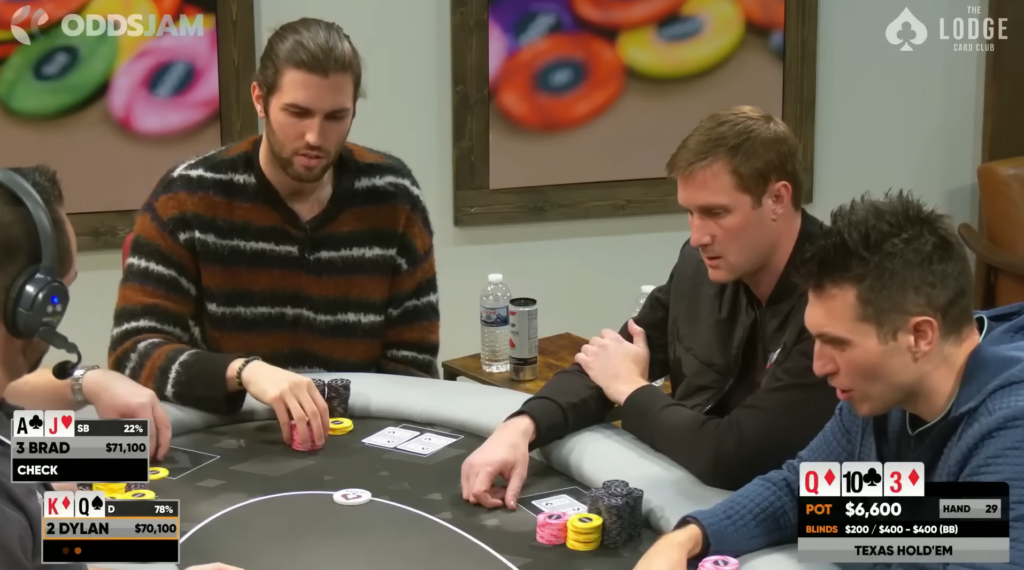In poker, the term “check” represents one of the four basic moves you can make when the action is on you in a poker game.
To check in poker is to pass the action to the next player without betting anything. You can only check if there isn’t an active bet when it comes your turn.
Let’s take a look at what it means to check in a game of poker:
What is Checking in Poker?
Check is one of four moves a player can make when the action falls on them in a poker game. Those four decisions look like this:
Depending on the situation, some of these options might not be available when the action is on you.
Checking is only an option if none of the players acting before you bet. When it comes your turn, you can tap the table to indicate a check, or just verbally declare that you’re checking.
Examples of Checking in Poker
Let’s take a look at an example hand beginning to end, and see how checking (along with the other three basic actions) apply to a poker hand.
Checking Preflop
In games that involve blinds, you can’t check in the preflop round. Here’s why:
Each hand of poker begins with the preflop betting round (assuming you’re playing Hold’em, Omaha, or one of the many other games that use community cards).
The small blind and big blind post mandatory bets before the hand begins. The first player to act then gets the opportunity to either call the amount of the big blind, raise (make the active bet a higher amount), or fold.
Once that player acts, all other players can either call, raise or fold.
For instance, let’s say you’re sitting in a $1/$3 No-Limit Hold’em cash game at the Lodge. The $1/$3 notation means the player in the small blind position posts a $1 mandatory bet before each hand. The big blind position must post $3.
Each player is then dealt two hole cards, and the preflop action begins with the player to the direct left of the big blind. That player can either call the big blind amount (putting $3 into the pot), raise (putting at least $6 in the pot), or fold.
Let’s say you’re sitting to the direct left of the big blind in the preflop round. When the action comes to you, you must at least call the $3 big blind to continue in the hand.
Checking isn’t an option in the preflop round, but that’s the only betting round where checking doesn’t factor into the game.

Checking Postflop
Once the preflop betting round ends, the hand goes to the flop. The amount of the active bet resets to zero.
If the amount of the active bet is zero when the action gets to you, you can check. Again, checking means not putting any money into the pot, and passing the action to the next player.
When the active bet is zero, your two options are check or bet. If you bet, nobody that acts behind you can check, as they must either call or raise to stay in the hand.
Let’s say three players are in a hand on the flop with $30 in the pot. The $30 in the pot came from the preflop betting round. When the hand goes to the flop, the active bet resets to zero.
The first-to-act player checks, passing the action to the second player. The second player can now either check (passing the action to the third player), or bet.
If all three players check, no additional money goes into the pot in the preflop betting round. All three players then proceed to the next betting round (the turn), and the process repeats.
All postflop betting rounds (the flop, turn, and river) allow the first player the option to check. Remember though, once someone bets, checking is no longer an option.
In the river betting round, if all players check, the hand goes to showdown, and the player with the strongest hand (according to standard poker hand rankings) wins.



